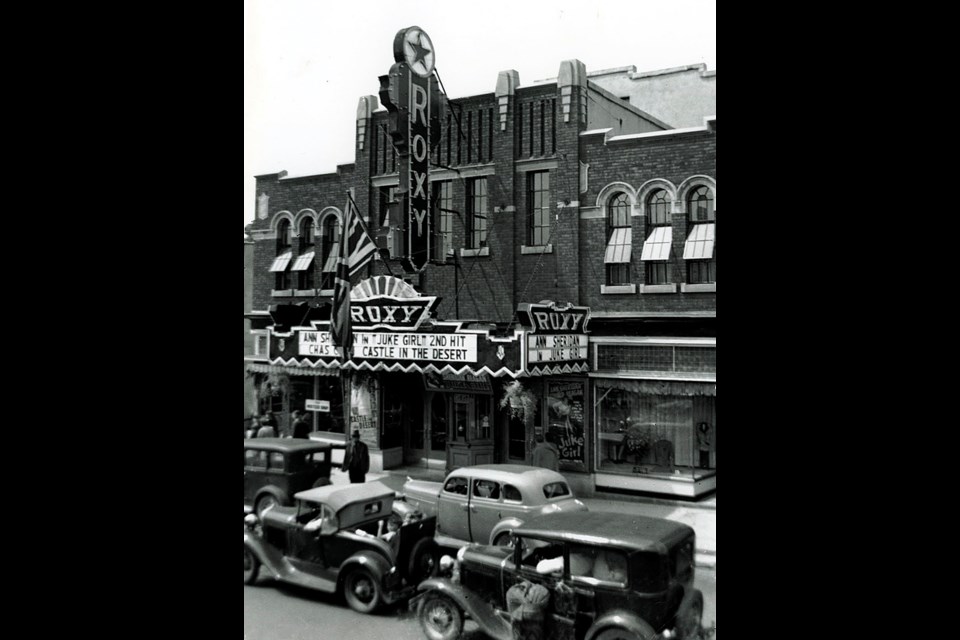The vision of an Italian immigrant who moved to Barrie more than 100 years ago is still front and centre in the city’s downtown.
Current Barrie resident Jamie Saso (pronounced ’say-so’) has fond memories of his grandfather, John Saso, who owned a fruit and vegetable market on Dunlop Street West.
But his grandfather’s lasting legacy might not be John Saso and Sons, the shop he operated near the beginning of the 20th century. He also built the nearby 700-seat Roxy Theatre, now known as Mavricks Music Hall.
“John Saso came to Canada as a young man with his bride and she was a Cancilla (a later descendent, Sam Cancilla, was a former alderman and owner of Cancilla’s Fruit and Vegetable Market on Collier Street in downtown Barrie who died in 2015),” Jamie says from his downtown condominium. “It’s ironic that I’m looking out this condo window at Sam Cancilla Park.”
Jamie’s father, Charles, and his bride Stella (nee Gianetto) were married in Midland. Residents of that Georgian Bay town may recognize Stella's maiden name in connection with Gianetto's Fruit Market, which closed in 2014 after almost 100 years.
Jamie says his grandfather came to this country by ship, but unlike a lot of other immigrants, he had some money with him.
“So he came to Barrie from Palermo, Italy with his three young sons and his bride — Grandma Saso — and they had to make a living and they acquired a piece of property which we now know as the corner of Dunlop and Maple streets,” he says. “They had mouths to feed and they started a fruit and vegetable store.”
In 1927, ‘talking’ movies were created and John Saso was smitten.
“There were silent movies at the time and talking pictures were just in their infancy,” Jamie says. “I don’t know where my grandfather got the idea, or the seed money to begin it, but he said, ‘I’m going to build a talking movie theatre’ and he proceeded to do just exactly that.
“In the late 1920s, it cost $100,000. It made all the local newspapers: ‘John Saso and his family are building this thing.’ They all had a hand in it. They were always working, either at the shows or somewhere at the businesses,” Jamie adds.
The Roxy Theatre opened to great fanfare in August 1931 and by the mid-1930s, Barrie was a theatre town.
“There was another theatre across the road, the Granada Theatre (originally the 570-seat Capital Theatre), which we eventually ran for Famous Players Corporation, so we had our two competing theatres going on,” Saso says.
Also down the street, the 600-seat Imperial Theatre would later open, so competition was intense.
The Northern Advance reported in April 1937 that: “Barrie went on record as the only town of its size in the district to have three theatres which are placed within a hundred square yards of each other.”
The Roxy was pretty high-end compared to some other venues.
As recounted in the book Beautiful Barrie, The City and Its People: "Patrons at the Roxy were greeted by a doorman and student ushers in uniforms. The carpeted interior with its lavish stage and domed ceiling was also the perfect atmosphere for live performances."
According to the book’s authors, that ‘floating ceiling’, complete with what looked like moving clouds, was true to the atmospheric architecture of movie ‘palaces’.
John Saso extended his nearby fruit store hours to midnight to sell to patrons leaving the theatre, the authors add.
Grandpa Saso’s theatre influence would eventually extend across the county to Collingwood and Penetanguishene.
Many years later, the Roxy Theatre became the Roxx Nightclub and eventually Mavricks Music Hall, as it is known today.
The theatre holds a huge place in the history of Barrie, Saso says.
“It was, in its day, a remarkable piece of engineering and aesthetically it goes back to the Art Deco period,” he adds. “From a spectator point, I’ve always loved the movies and music. Maybe the Roxy is what started me off; maybe it’s in my DNA.



